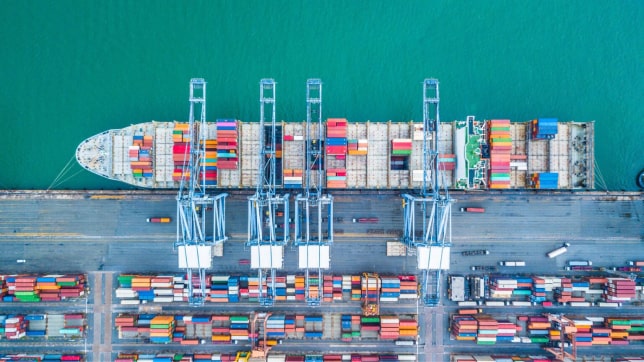In 2020, when obstacles like the Covid-19 pandemic and tariffs on China created longer lead times, shippers sought to diversify their supply chains and move their operations closer to the end customer. Some United States companies decreased shipping times by starting up manufacturing operations in Mexico – a practice known as nearshoring. Since then, nearshoring has rapidly grown in popularity, especially in the automotive industry. As of 2023, Mexico has grown to be the United States’ largest trading partner.
Nearshoring is an effective strategy because it eliminates ocean shipping from the equation and moves manufacturers closer to the end consumer, saving significantly both time and money. However, if it is not done correctly, several hurdles can prevent companies from reaping the maximum benefits of this approach. When shipping across the U.S.-Mexico border, it’s common to run into a lengthy customs process, and without a partner with the core knowledge of border crossing, many problems can arise. Additionally, if a company is relying on multiple logistics providers, the documentation process can take much longer. To avoid these delays, it’s vital for companies to fully optimize their cross-border shipping processes and rely on a trusted partner with the core competency to get them across the border on time.
Here are some key ways that shippers can improve their nearshoring strategies for a successful cross border experience:
1. Work with a CTPAT-certified logistics provider and assigned carriers
CTPAT (Customs Trade Partnership Against Terrorism) certification shows customs that an importer cooperates with the cargo security standards of the United States. With this certification, companies benefit from front-of-line inspections, access to better lanes at the border and fewer examinations. These benefits streamline the customs process and get items across the border faster and safer leaving you with peace of mind.
2. Sync your hours of operation with border customs operations
Transportation companies can improve the customs process by syncing their hours of operations with border customs operations. Operating at different times can result in shipments being delayed by full days. It’s also important to consider the difference in time zones between cities in the United States and cities in Mexico. For the automotive industry, just-in-time (JIT) manufacturing strategies can guarantee that shipments are prepared and make it to the line when required, even when starting out across the border.
3. Simplify documentation flow by working with fewer vendors.
When a company is working with multiple logistics vendors, important documents can get lost in the process, which negatively impacts shipping speeds. To overcome documentation slowdowns, it’s a good idea to work with a single provider that has the technology to keep track of all documents and make them easily accessible when needed. Companies should also work with providers that can build integrations with other vendors and provide a single view of all cross-border operations.
4. Overcome language barriers
Companies should work with logistics providers who have experienced, bilingual team members. This will result in a much smoother communication process. It’s also vital for digital technology platforms like load boards and tracking systems to have Spanish and other language options.
If you’re looking to optimize your cross-border operations, RXO can help. In March 2023, RXO opened a 135,000 square foot facility in Laredo, TX, which features direct highway access to the World Trade Bridge. With 43 dock doors, high security standards and a skilled bilingual team that’s available 24/7, this facility is equipped to move products across the border efficiently and effectively. Several of our automotive clients already take advantage of this service today.
RXO has more than 20 years of experience with managed transportation in Mexico and cross-border operations. In addition to our Laredo, TX location, our Monterey, Mexico office is staffed with 200-plus logistics experts that sit on-site within control towers and customer facilities. We currently manage over 800 CTPAT-certified and pre-vetted carriers that can handle nearshoring shipments safely and reliably.
To learn more about RXO’s nearshoring capabilities, contact us today at [email protected].
Managed Transportation – 6 min read
Creating an Adaptable Managed Transportation Solution With a Major North American OEM
This managed transportation case study involves a multinational automotive manufacturing corporation as a client.
Freight Forwarding – 2 min read
5 Things to Look for in a Freight Forwarder
Determine your needs before selecting a partner based on experience and scope
Resources by category
Text to describe more about what a user would get if they clicked on any of these links


